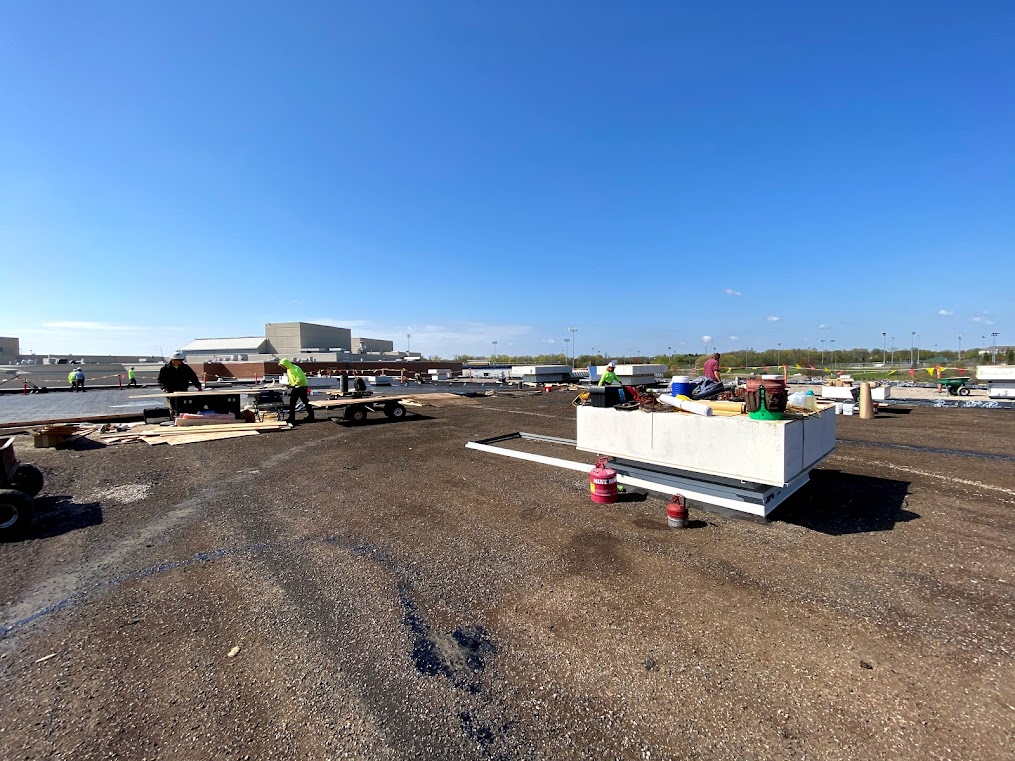What are the considerations in deciding on a commercial roofing type?
When building a new commercial building, architects and contractors typically decide the type of roofing system used. They will consider many factors, including energy efficiency, lifespan, durability, maintenance requirements, environmental factors, and of course, budget.
Some types of commercial roofs are less expensive to install than others but may be more costly to maintain over the roof’s lifespan.
What types of commercial roofing does Mint Roofing install?
At Mint Roofing, we work primarily with three types of commercial roofs:
Built-up Roofs
Single-Ply Membrane Roofs
Sheet Metal Roofs
1. Built-Up Roofs
Built-up roofs, as their name suggests, are roofs made of multiple layers of material. Most commonly, they consist of layers of tar and gravel. Multiple layers increase the durability of a built-up roof but increase the cost with each layer.
One of the oldest types of commercial roofs, built-up roofs hold up well to foot traffic but require a stable foundation with minimal vibration to preserve their integrity. Built-up roofs are resistant to UV damage..
Pros: Durable
Cons: Average lifespan
2. Single-Ply Membrane Roofs
Single-ply membrane roofs consist of a metal substructure covered with a material covering the entire roof’s surface. Mint Roofing has years of experience installing the most common types of single-ply membrane roofs.
EPDM (Ethylene Propylene Diene Terpolymer) is a synthetic rubber material that provides average durability and resists damage from sunlight and most pollutants. It has a long life and is relatively easy to install as a new or replacement roofing material. EPDM is available in white or black.
Pros: Long lifespan
Cons: Low durability
TPO (Thermoplastic Polyolefin) and PVC (Poly Vinyl Chloride) are options well suited for extreme environments. They perform well in hot and cold temperature extremes and are resistant to UV, most chemicals, oils, fats, and punctures. TPO and PVC roofs will tolerate strong winds and have the added benefit of reflecting heat away from the building in the summer months.
The popularity of these materials has led many roofing contractors to cut corners and use cheaper knock-off materials. Rest assured that Mint Roofing uses only the highest quality materials
Pros: Long lifespan
Cons: More expensive
3. Sheet Metal Roofs
They have a long life expectancy, but some are susceptible to corrosion, particularly in our harsh northern climate. Months of accumulated snow cover can lead to oxidization and corrosion, increasing the likelihood of leaks. To prevent this, metal roofs are often treated with a protective coating.
Pros: Long lifespan, fire resistance
Cons: Susceptible to corrosion
Mint Roofing will help you find the perfect roof for your needs.
From built-up roofing materials to single-ply membranes to sheet metal – Mint Roofing performs every job in-house and works directly with contractors and their design teams to help them choose materials that provide energy efficiency and durability.
Mint Roofing Has Top Industry Credentials
With 75 years of local experience in commercial roof construction, Mint Roofing holds many industry designations:
- Elevate (formerly Firestone) Commercial Roof Master Contractor
- Firestone Inner Circle of Quality Contractor
- GAF Commercial Roof Master Select Contractor
- Certified Commercial Roof Contractor for John Mansville
- Minnesota State-Approved CPV Contractor
- ES1 Certified Sheet Metal Contractor
When it comes to commercial roofing, there’s only one name contractors trust! MINT!
FAQs
Q: What are the most common types of commercial roofs in Minnesota?
A: The most common types of commercial roofs in Minnesota include TPO (Thermoplastic Olefin), EPDM (Ethylene Propylene Diene Monomer), metal roofs, built-up roofs, and PVC (Polyvinyl Chloride) roofs. Each type offers different advantages and suitability for various commercial applications.
Q: What are the benefits of choosing EPDM roofs for commercial buildings in Minnesota?
A: EPDM roofs offer several benefits for commercial buildings in Minnesota. They are highly resistant to weather elements, including UV radiation and temperature extremes. EPDM roofs are also flexible, durable, and require minimal maintenance. Additionally, they have good insulation properties, which can help with energy efficiency.
Q: Are TPO roofs a suitable choice for commercial buildings in Minnesota?
A: Yes, TPO roofs are a suitable choice for commercial buildings in Minnesota. TPO roofs have gained popularity due to their energy efficiency, durability, and resistance to weather conditions. They can withstand Minnesota’s cold winters and hot summers while providing excellent protection against UV radiation.
Q: What is the average lifespan of commercial roofs in Minnesota?
A: The average lifespan of commercial roofs in Minnesota varies depending on the type of roof. Generally, TPO and EPDM roofs can last between 20 and 30 years, while metal roofs have an average lifespan of 30 to 50 years. Regular maintenance and inspections can help extend the lifespan of commercial roofs in
Q: How much does it cost to install a commercial roof in Minnesota?
A: The cost of installing a commercial roof in Minnesota depends on several factors, including the size of the building, the type of roof, and any additional features or requirements. It is best to consult with a professional roofing contractor who can assess your specific needs and provide an accurate cost estimate based on your project.
Q: What is the importance of regular roof maintenance for commercial buildings in Minnesota?
A: Regular roof maintenance is crucial for commercial buildings in Minnesota to ensure the longevity and performance of the roof. Harsh weather conditions, such as heavy snowfall and freezing temperatures, can take a toll on roofs. By conducting regular inspections, identifying and addressing minor issues early on, and performing necessary repairs or maintenance, you can prevent more significant problems and extend the lifespan of your commercial roof.
Q: Are there any specific building codes or regulations for commercial roofs in Minnesota?
A: Yes, Minnesota has specific building codes and regulations that govern the construction and installation of commercial roofs. These codes aim to ensure the safety, structural integrity, and energy efficiency of commercial buildings. It is important to work with a knowledgeable roofing professional who is familiar with local building codes to ensure compliance and the proper installation of your commercial roof.


